Sashimi vs. Nigiri
When you buy through our links, The Breslin may earn an affiliate commission. Learn more
Sashimi vs. nigiri, it’s the good old food showdown between the two top-notch Japanese delicacies. Most people will say that they are all just raw food, but a real gourmet knows that they are not the same, and each dish has its pros and cons.
If you are confused about these delectable dishes or are trying to learn more about raw food and Japanese cuisine, you are in the right place. In this post, I’ll show you some basic information about sashimi and nigiri, plus their similarities and differences.
A friendly warning – your stomach will growl!
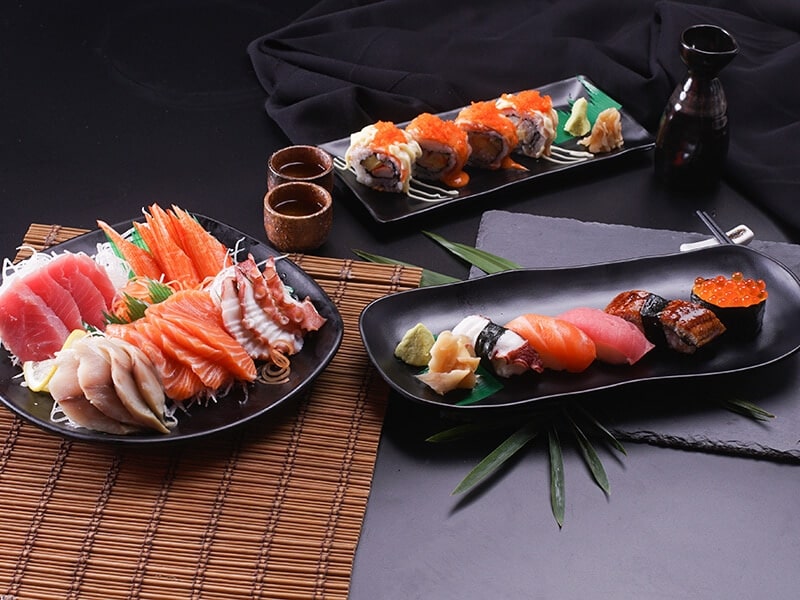
Sashimi And Nigiri – Same Same But Different
Sashimi is thinly sliced raw meat served with soy sauce, while nigiri is raw fish or seafood served over a small rice ball and also eaten with soy sauce. They do sound very similar, but when diving deeper into details, there’s a world of difference.
Apart from the name, they differ from each other in many respects:
- Main ingredients
- Preparation
- Serving
- Garnishing
- Eating methods
- Nutrient content
Now, let’s get to know a bit about sashimi and nigiri, the two traditional Japanese dishes that have captured people’s hearts with exquisite flavors.
Hallmarks Of The Raw Finesses
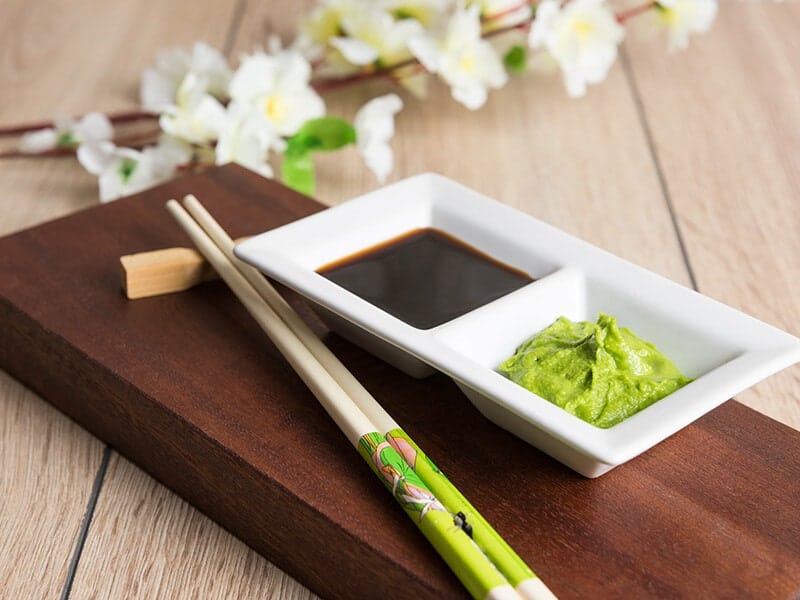
Sashimi and nigiri share one thing in common: they are both served raw. To guarantee food safety, the materials have to be of the highest quality and stay fresh until they are on the plate. And, of course, expired ingredients are a big no.
They are both made with the finest raw fish. Typically, salmon is used, but you can also expect to see tuna or yellowtail. Another mutual feature of the two delicacies is the condiment choices. They are usually eaten with soy sauce, wasabi, or pickled ginger.
The Japanese take great pride in these two dishes, and the raw food practice has become stronger than ever. Nigiri and sashimi are now present in many parts of the world, bringing gourmet lovers a culinary experience that they shall never forget.
With strict hygiene regulations, the preparation of nigiri and sashimi is only entrusted to an “itamae,” (1) an appellation given to someone who masters the art of raw gastronomy. The learning and training process can last for up to 20 years!
That said, sashimi and nigiri are not any kind of fast food to eat in a tearing hurry. They are meant to be savored and appreciated leisurely, and once the flavors and freshness has managed to captivate your senses, there’s no turning back.
Dissimilarities Between Sashimi And Nigiri
For beginners, it can be complicated to tell sashimi and nigiri apart. After all, they are all raw meat, sometimes with rice, and served with a multitude of condiments. Yes, I’ve been in the same situation.
The provided chart will offer you a quick look at the differences between the two dishes, followed by a detailed explanation.
And now, it’s time for the big picture. Let’s go!
Core Ingredients
Sushi is a Japanese dish consisting of vinegared rice (shari) and usually raw meat (neta). Therefore, nigiri counts as sushi since it has rice. Sashimi, on the other hand, is a class of its own.
As mentioned earlier, raw, fresh slices of fish, sometimes seafood like squid or octopus, are the main ingredient of nigiri and sashimi. However, nigiri offers greater meat diversity than its counterpart. Besides fish, chicken, beef, or frog is also topped on rice.
Preparation
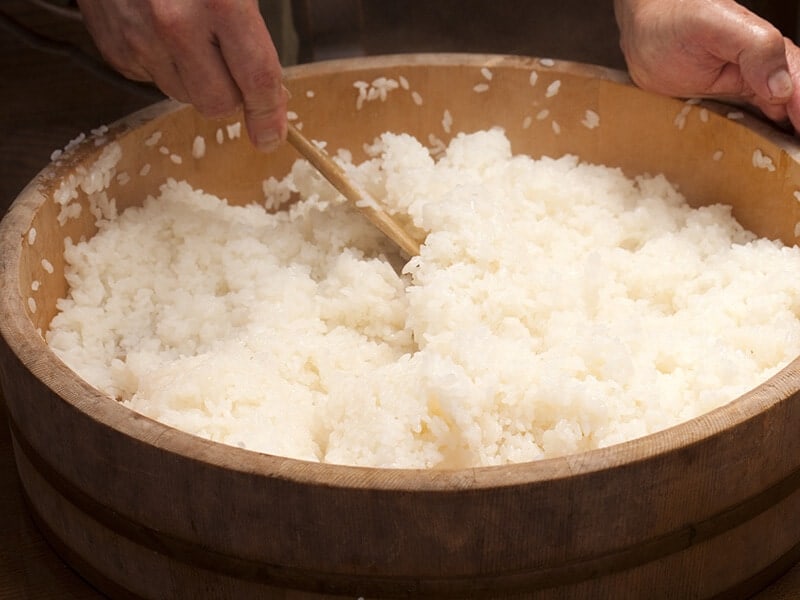
Since both dishes are made with raw meat, they have to be meticulously prepared to ensure food hygiene. The chosen ingredients must be of the best quality and stored at or under 4 degrees Celsius to maintain freshness before serving.
Sashimi is always served raw, but it is not the same case for nigiri. For instance, fishes like ebi are sometimes lightly cooked for an extra flavor or make it easier on your tongue if you are new to the raw food game. Raw or processed, they are all delicious.
Indeed, the rice in nigiri is cooked. Short-grain Japanese rice is the ultimate choice since it has high starch content, ideal for pressing and rolling. Products made with long-grain rice won’t maintain their consistency and, therefore, are difficult to grab with chopsticks.
Serving
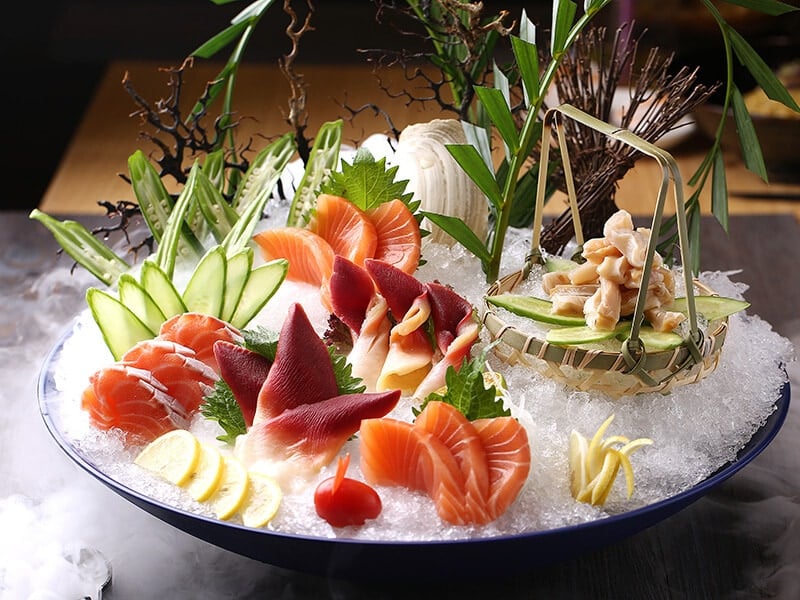
Shaping nigiri requires a fine balance between hand pressure and an eye for detail. For each roll, you will need about 25 grams of rice (3 tablespoons). With your hands slightly wet, squeeze and shape the rice into an oblong. Then, press the top with two fingers.
Sashimi is usually cut into thin slices (⅜ inch) or bite-sized pieces. Nigiri is a lot thicker (¼ inch), so it’s understandable why people don’t usually feel full when they eat sashimi.
Nigiri is usually served on a plate at room temperature. Sashimi, instead, is arranged with great care on a bowl of ice for a visual appeal. The ice also helps keep the slices fresh so that people can enjoy the taste without haste.
Garnishing
Unlike sashimi, nigiri is not alone. It is usually accompanied with garnishings like shredded daikon radish, refreshing perilla leaves, and toasted seaweed alongside soy sauce and wasabi.
Eating Etiquette
If you dine at an authentic Japanese restaurant, you will be given a hot towel to wipe your hands before enjoying the meal. Should you not, go to the bathroom and give your hands a quick rinse.
Of course, you should not eat nigiri or sashimi with a fork and knife! That would be bizarre or even offensive in some traditional Japanese restaurants. You are well-advised to eat sashimi with chopsticks; for nigiri, eating with hands is more encouraged than utensils.
You will use the thumb and the middle finger to pick up the nigiri rolls. The neta should be faced upwards so that it’s easier to dip into the sauces and avoid the rice part touching the sauce, which can affect the flavor and consistency.
Another rule you must keep in mind while savoring these lip-smacking dishes is that they are intended to be enjoyed in a single bite. Yes, you can eat in two bites if it’s way too big, but it’s likely to fall apart. This is particularly true with nigiri since it contains rice.
If you think you cannot devour a piece in one bite, feel free to ask the chef to slice it into smaller pieces for you. This is usually convenient in Japanese restaurants where you dine at the counter with the chef preparing the food behind.
Key condiments and accompaniments include soy sauce, wasabi, and ginger. The last one is used to clean your palate rather than enhance the flavor, ensuring that every piece on the table will bring a unique flavor to your taste buds.
You won’t make a fool of yourself with this guide to eating sashimi.
Nutritional Value
The nutritional content varies based on what kind of meat you use. For instance, scallop nigiri has about 50 calories, while the eel equivalent is slightly higher (about 100 calories). Overall, nigiri is relatively low in calories, ideal for weight watchers.
Sashimi does not fall far from behind. To illustrate, salmon sashimi is loaded with dietary protein, omega-3 fatty acids, and potassium. (2) Moreover, consuming sashimi can help with weight management, so you should not be worried about gaining some pounds.
Overall, sashimi is the healthier option because of its high quality. Preservatives are not present in sashimi, though nigiri can have them in a small amount to extend the shelf life (store-bought rolls only).
With such impeccable flavors and wholesome nutrients, there’s no surprise to see these dishes gain massive popularity. At first, sashimi and nigiri can be difficult to eat or even unbearable, but once you get them right, you won’t be able to stop at just one piece.
A Few Sashimi And Nigiri Recipes To Enjoy At Home
Nothing is more rewarding than devouring a piece of sashimi and nigiri. Yet, the idea of spending hundreds or even thousands of dollars for a sashimi or nigiri meal is not too tempting, perhaps even intimidating.
Don’t extinguish your dream, my friend. It’s difficult to believe, but you can make sashimi and nigiri at home so long as you have patience and proper tools on hand. Have you prepared to become a sushi expert?
Sashimi
The trickiest part of making sashimi is probably finding sushi-grade ingredients. However, if you already have the freshest cuts at hand, half the job is done. What you need to do next is show off your professional knife and plating skills.
1. Sake Sashimi (Salmon Sashimi)
Sake is one of the most sought-after types of sashimi. Its freshness has never failed to impress, and the taste will go beyond your expectations when served with ponzu sauce, which tickles your palate with bright notes of citrus.
What’s not to love about these fresh slices of salmon?
2. Ahi Sashimi (Tuna Sashimi)
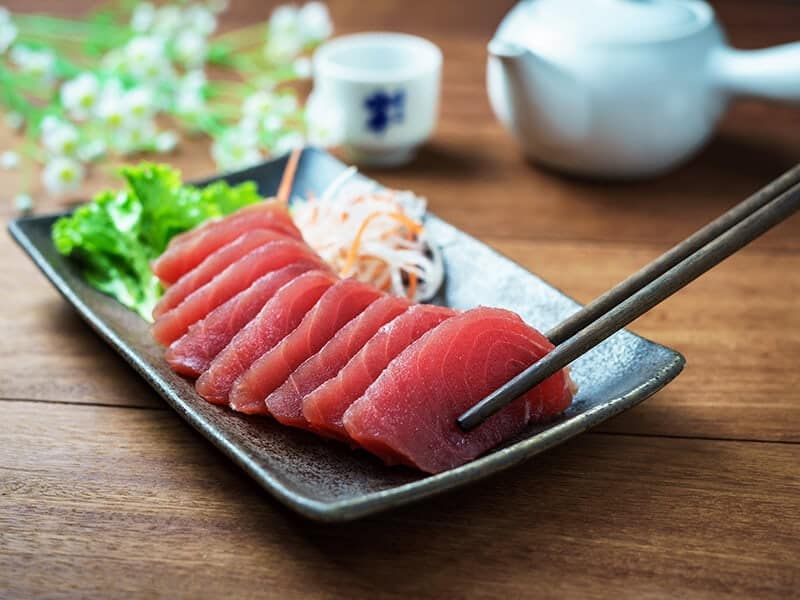
Your only regret is not having tried tuna sashimi earlier! Unlike other kinds of sashimi, the fishy smell of tuna is not too overpowering. Its salty taste is a perfect match against julienned daikon, which also acts as a palate cleanser, and a dab of wasabi.
3. Hotate Sashimi (Scallop Sashimi)
Scallop is the ultimate choice for a quick starter. With an incomparable tenderness and a delicate sweet, nutty flavor, it does not need much preparation – or none at all. Serve raw with panko, nori, and a sprinkling of seaweed salt – it will go down by a mouthful!
4. Ebi Sashimi (Sweet Shrimp/Prawn Sashimi)
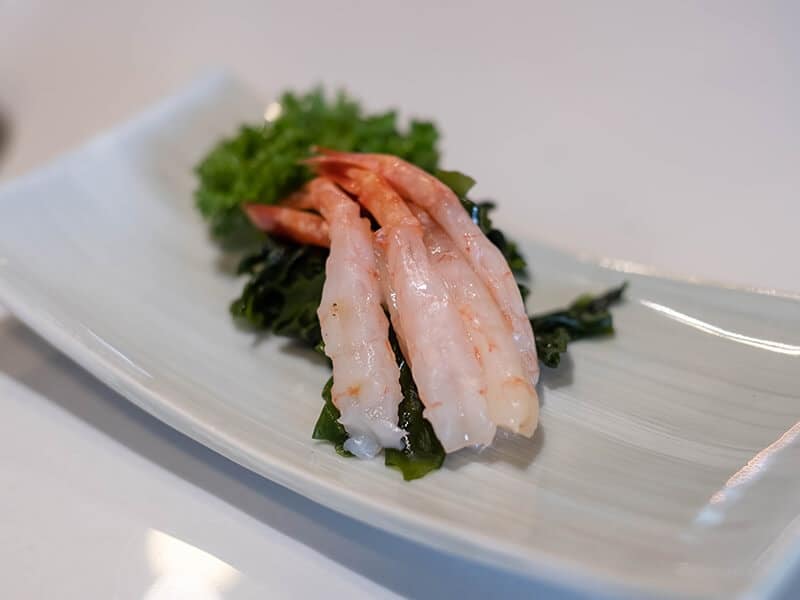
Ebi, short for amaebi, is a kind of cold-water shrimp known for its mildly sweet taste. It is an indispensable item in numerous Japanese dishes such as maki or nigiri, but it’s best when served raw and “butterflied” since the sweetness is fully retained.
5. Ika Sashimi (Squid Sashimi)
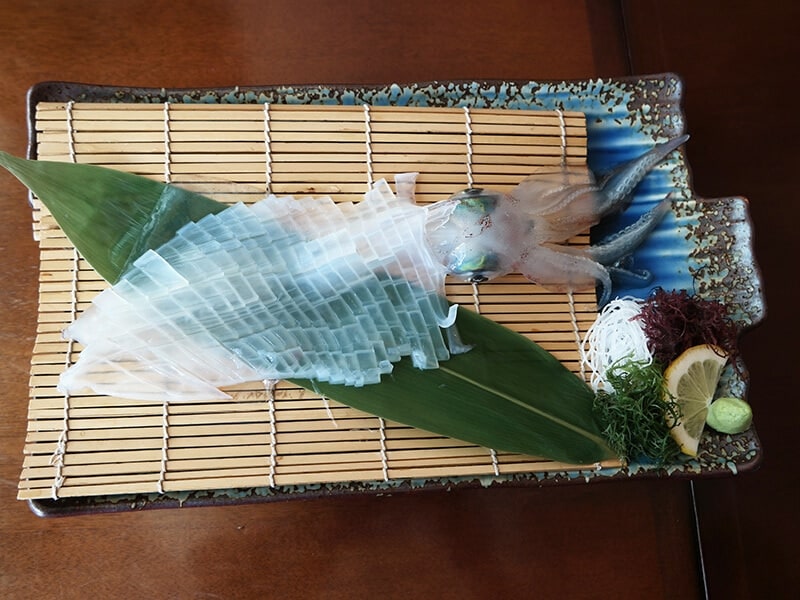
Looking for a new appetizer idea? Try ika, a type of sashimi made from raw strips of squid. From afar, it looks like vermicelli and is enjoyed by slurping up like how you would with noodles. The Hokkaido specialty is accompanied by a unique sauce called mentsuyu.
Nigiri
Want some maki and sashimi at the same time? Nigiri will fulfill your wildest dreams. The following nigiri recipes are way too good to resist.
1. Maguro Nigiri (Tuna Nigiri)
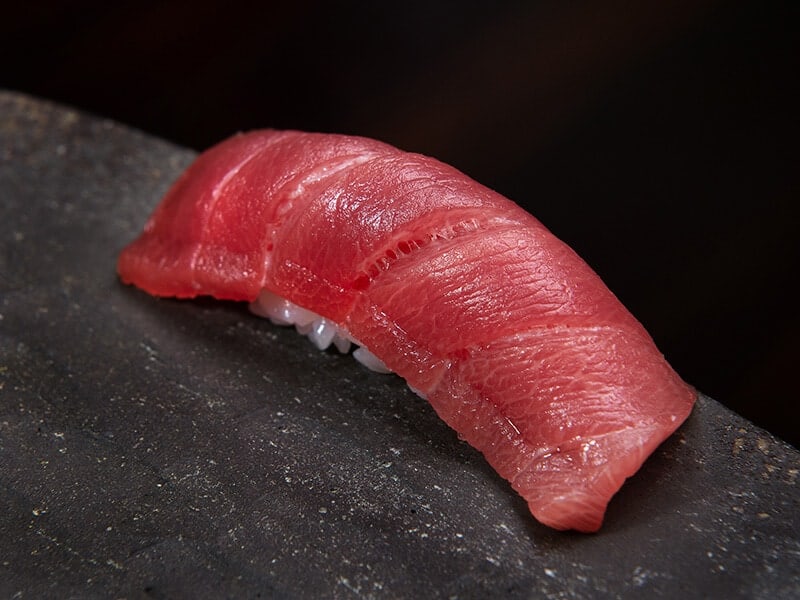
It’s no surprise to see maguro nigiri tops the chart of the most popular kinds of nigiri. It is made with a hand-pressed chunk of sushi rice and different cuts of tuna classified into three groups: akami (lean cut), chutoro (medium-fatty), and otoro (fatty).
2. Sake Nigiri (Salmon Nigiri)
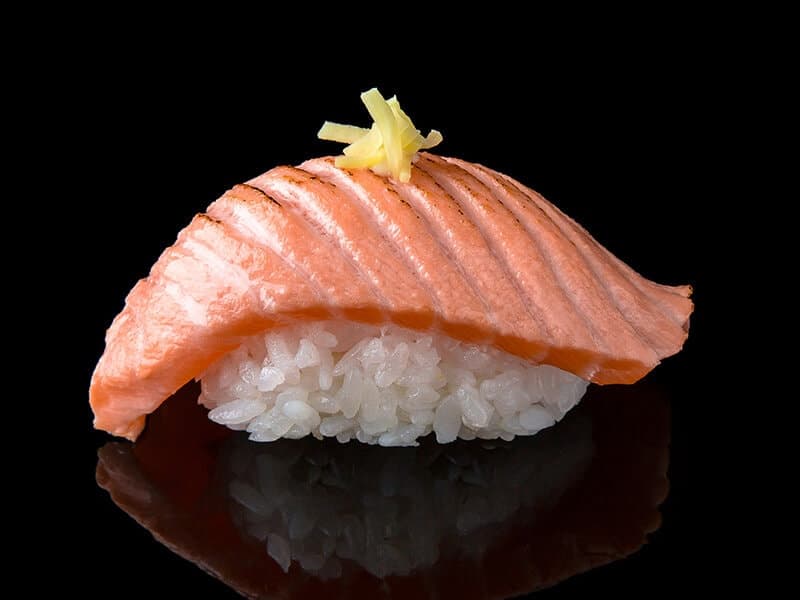
Salmon is superior when served at its raw state. Apart from the heavenly tenderness, it is also famous for immense health benefits like managing weight or dealing with mental disorders. Now you know why people feel so happy after having a roll of sake nigiri!
3. Unagi Nigiri (Eel Nigiri)
The secret to wow your guests? Make a batch of unagi nigiri, which comprises vinegar rice and a slice of freshwater eel, which can be seared sometimes for a smoky character. It is a nice option for the picky eaters who cannot stand the overwhelming fishy aftertaste.
4. Tamago Nigiri (Omelet Nigiri)
Most kinds of nigiri are prepared raw, but some can be cooked and kid-friendly. Tamago is an example if you are looking for something dedicated to underage guests. It is made with a knob of omelet secured to the rice piece by a seaweed band.
Your kids will be obsessed with this tamago nigiri recipe.
5. Hamachi Nigiri (Japanese Amberjack/Yellowtail Tuna Nigiri)
Yellowtail tuna, or Japanese amberjack, is highly valued in the sushi world. The fish has a unique meaty flavor and tastes miles better when slightly charred, providing a textural contrast that takes you to a whole new dimension.ư
FAQs
Nigiri and sashimi are full of surprises, so I bet that you still have lots of questions even when you are here. Well then, don’t hesitate – check out the following section to find out the answers.
Let The Taste Explode In Your Mouth
So who’s the winner between the sashimi vs. nigiri battle? I’ll let you be the judge. With such diverse choices and exceptional flavors, they are all worth a try. Some are pretty strong-flavored, but as soon as you dampen it with soy sauce, the taste is mesmerizing.
I hope this post has plucked your courage to try sushi and helped you learn more about these fantastic dishes. Should you have any further questions or want to contribute something I have missed in the post, let me know via the comments. Many thanks!
References
- En.wikipedia.org.. Itamae – Wikipedia.
- BluGlacier.. 6 Salmon Sashimi Health Benefits | BluGlacier: Top-quality salmon.


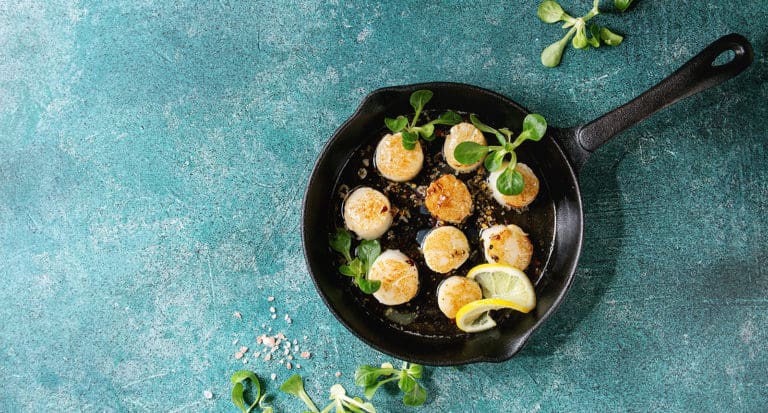

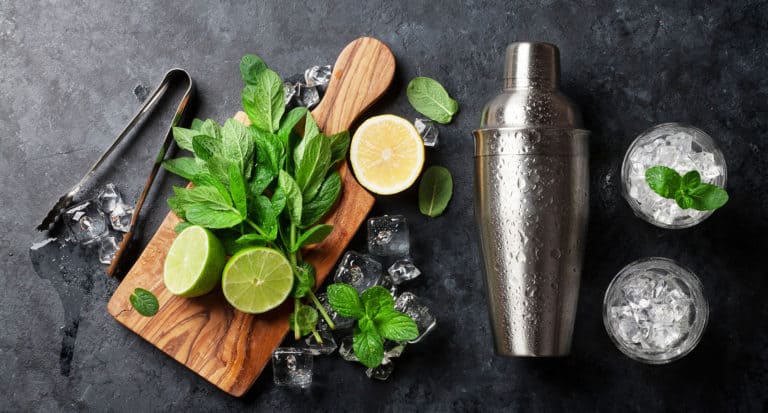


Amanda Collins
Founder and Senior Culinary Editor
Expertise
Culinary Arts and Management, Food Journalism and Critique, Recipe Development and Testing, Global Culinary Traditions, Sustainable Food Practices
Education
Institute of Culinary Education (ICE), New York, NY
Program: Diploma in Culinary Arts
Focus: Intensive hands-on training in culinary techniques, recipe development, and kitchen management, preparing students for professional roles in the culinary industry.
Monroe College, New Rochelle, NY
Program: Associate in Applied Science in Culinary Arts
Focus: Practical culinary skills, including cooking techniques, menu planning, and kitchen operations, with an emphasis on hands-on experience and industry standards.
Amanda Collins is a seasoned chef and food editor with a deep love for global flavors. Trained at the Institute of Culinary Education and Monroe College, and with over 15 years in the culinary field, Amanda has refined her skills in kitchens worldwide. Her background in food studies gives her a unique ability to share both recipes and the cultural stories that shape them.
As senior culinary editor at thebreslin.com, Amanda’s work brings authentic dishes to life, inviting readers to explore new flavors and techniques from around the globe. Her approachable style makes it easy for anyone to bring a bit of the world’s cuisine into their kitchen.